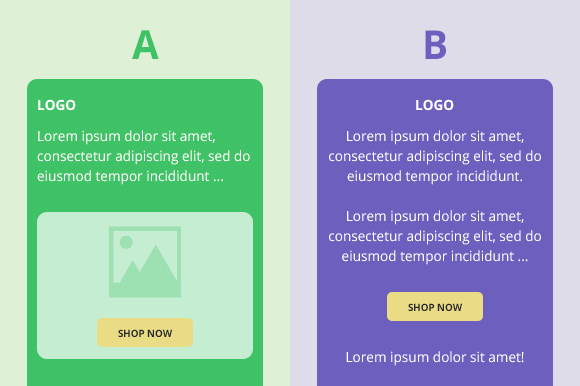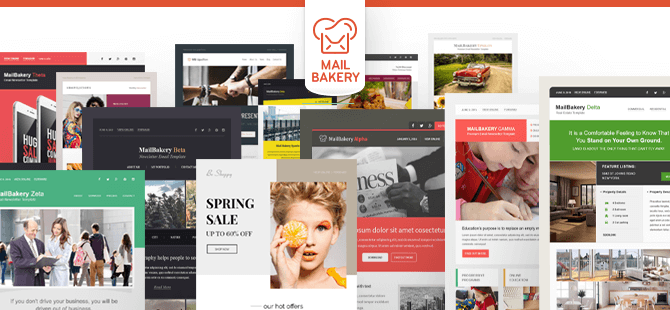7 Email Marketing Myths You Should Ignore
Reading Time: 6 minutesThis article was last updated on June 7, 2021
Email marketing is like a fairytale or medieval-themed game; they both have many myths and legends. Some are used to help you find success, while others are meant to deter you. With email marketing, however, it’s more of the latter. These email marketing myths shape how you approach marketing and how you engage with your customers. Each myth is supposed to be a tool that guarantees the best results when in actuality, they can have adverse effects and leave you walking on eggshells.
But never fear, MailBakery is here to help you debunk some of the most common email marketing myths that dominate the industry and empower you to take your campaigns to the next level. Let’s take a look.
Hot Links in This Blog:
Myth #1: Email Marketing is Dead

This is the king of all email marketing myths. It’s been shouted from the rooftops for decades, yet email marketing remains, and it’s the most successful marketing channel amongst its counterparts. According to a Hubspot survey, 93 percent of B2B marketers use email marketing to distribute content. In comparison, 59 percent of consumers say that information they’ve read in an email influenced their purchase decision. Many believe that email marketing is dead because the channel doesn’t always work, which isn’t as much the fault of the channel as it is the strategy your company uses.
The first step to better email rates is to audit things like your goals, email marketing campaigns, and subscriber list. After that, consider the various ways to adjust your strategy to recharge your email marketing efforts. A few tactics include using segmented lists to ensure customers get content relevant to them, A/B testing your emails for efficiency and customer preference, and adding a call to action to every email.
Myth #2: You Must Always Keep a Professional Tone

Your tone isn’t about what you say as much as it’s about how you say it. For decades, the standard tone of marketing emails was required to be professional, citing that it is what readers expect and respond best to. Unfortunately, this is one of the greatest email marketing myths in the industry. Using the wrong can make it harder to grab readers, and having a professional tone can more off as dry and formal. The best tone to use in your email copy should reflect your brand’s standards. If your brand has a light and friendly persona, your content and email marketing campaigns should feature a conversational tone to match your target audience.
Myth #3: There is a Magic Time of Day to Send Emails

Read any blog on email marketing, and you’ll find that the times and days of the week vary. Some say Tuesday is the best day to send emails because employees are more productive. Others will say that Wednesday or Thursday before lunch is best because employees have caught up on last week’s tasks and can take on new ones. The truth of the matter is that there is not perfect day and time to send emails; it’s one of many email marketing myths you should ignore.
Nailing down the perfect time and day to increase the chance your subscribers will read your emails vary based on industry, audience, and other factors. We recommend consulting industry standards and using them as a starting point. Next, experiment with different send times and document their success to gain insight into how you should tweak your approach.
Related: Timing is everything: When to send your marketing emails
Myth #4: Plain Text Emails Don’t Perform as Well as Heavily Designed Ones

We admit, there’s nothing like a beautifully designed marketing email that features great imagery. However, it is an email marketing myth that readers prefer image-rich emails over plain text emails. Did you know that customers disable images in their emails? Or that 60 percent of email clients block images by default? Using plain text emails have the potential to reach more subscribers than heavily designed emails.
And what’s worse is that solely relying on heavily designed templates can lead to your leads missing your call to action. If your reader decides not to download images, your carefully curated image-embedded CTA could get overlooked. If you’re not convinced that it’s a myth you should ignore, use A/B testing to track the responses to both versions of your email. The results may surprise you.
Myth #5: Stop Sending to Inactive Users

It is a standard industry belief that you should purge your inactive subscribers after 90 days — 3 months— to keep a clean email list. This is another one of the email marketing myths you should avoid. While we don’t argue that you should tidy up your list, we do suggest holding off on purging it until a subscriber has been inactive for six months.
Studies show that 20 percent of “inactive” users will open your emails after some time. A few strategies to use when your subscribers inevitably resurface are asking them to update their preferences (you can even offer an incentive!) or send them an email updating them on what has changed since their last visit.
Myth #6: Subscribers are Quick to Click the Spam Button

Up next on our list of email marketing myths is one that stirs fear in marketing teams worldwide. Email marketing experts warn of using words and design choices that are sure to earn your emails a first-class ticket to the spam folder, which has many marketers walking on eggshells. When, in actuality, data shows that the industry standard for spam complaints is less than 0.02 percent or one complaint for every 5,000 subscribers. If you find that you have a high unsubscribe rate, you may want to revise your strategy. The best way to avoid having your emails flagged as spam is to ensure you’re providing quality content relevant to your readers.
Related: 8 Ways to Keep Your Marketing Emails Out of the Spam Folder
Related: 10 Ways To Avoid Falling Into The Spam Box
Myth #7: Low Unsubscribe Rates Are Good

Many companies take unsubscribes personally and correlate a low subscribe rate with success; that’s not entirely accurate. Contrary to popular belief, a customer unsubscribing isn’t the end of the world, even though it may feel like it. It can actually be a blessing in disguise. You see, those who unsubscribe represent a percentage of your customer base who isn’t interested in the products or services your company offers.
You may also have some inactive readers who haven’t unsubscribed from your emails, choosing to ignore them instead. Both of these groups are clients you don’t want to be subscribed to you. There are many reasons why they might choose to unsubscribe, from being an unqualified user and realizing they aren’t your ideal customer to your product exceeding their needs or budget. As much as you want to hold on to those subscribers, they can severely impact your data tracking accuracy and cost you money in the long run.
MailBakery

Email marketing myths shape our approach to building successful marketing campaigns. We hope that our myth-busting inspires you to take chances with your email marketing campaigns. And if you’re interested in experimenting with email designs, look no further than MailBakery. Our team can work alongside you to bring to life the stunning, brand-specific designs you desire or create custom designs that you and your clients are sure to love.
If you’re ready to get baking or want to learn more about our services, please contact our team today!
